Sitting in the foothills of the Sierra Nevada, the southern Spanish city of Granada is full of Islamic architecture and Arabic touches alongside churches, traditional tapas bars, and graffiti art. Just a three-hour flight from London, the city offers both history and energy through its cafes, student life, and flamenco clubs. The origins of the city are somewhat mysterious, elaborated to become stories of legend and fable including the biblical Noah or even Hercules.
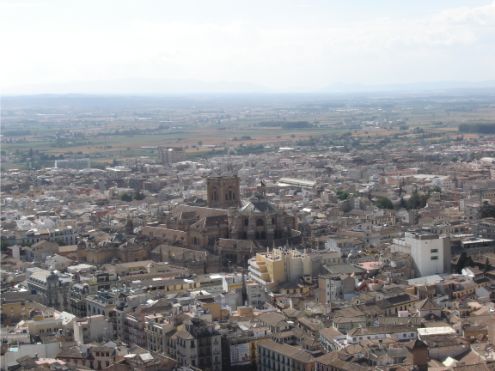
Image Credit: Mike
The Alhambra is the must-see, high-profile attraction of the city, named for its reddish walls (“Red Castle” in Arabic). This fortified Moorish palace, which started life as a walled citadel, is one of the finest Islamic buildings in Europe and it is paired with the beautiful Generalife gardens made up of pools, fountains, and trees. Architecturally, the designers wanted to cover every single space with decoration, no matter how large or small, meaning that walls and arches are covered with rich ceramics and plasterwork. References to the buildings themselves date back to the 9th century, but some elements may have been standing since Roman times.
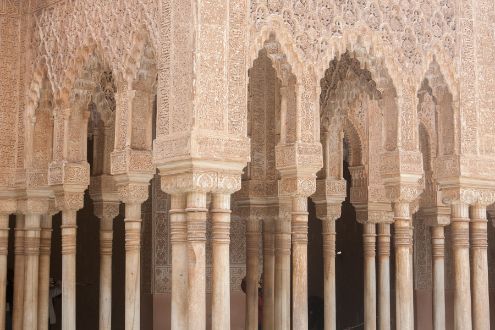
Image Credit: piet theisohn
The centrepiece of the Alhambra complex is the Palacíos Nazaríes, home to both former state rooms and family quarters. The building’s perfectly proportioned rooms and courtyards, tiling, stucco walls, and finely carved wooden ceilings shouldn’t be missed.
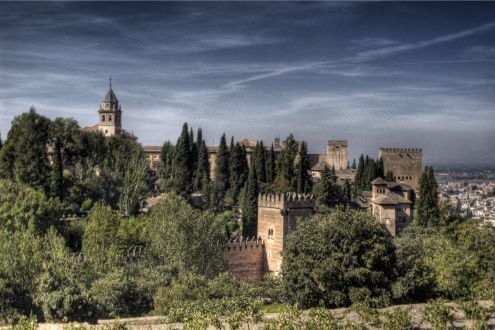
Image Credit: Ángel M. Felicísimo
The historic Basílica San Juan de Dios, built in the mid-18th century, is found in the Historical Centre of Granada, a lively area full of shops and tapas bars. The Basílica San Juan demonstrates opulent baroque decor of gold and silver, as well as a dome soaring to a height of 50m; its highlight is the gold altarpiece in the main chapel.
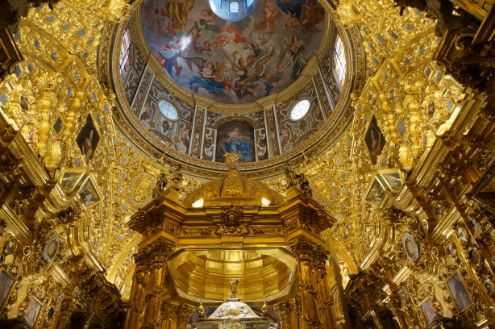
Image Credit: Andrew and Annemarie
In the surrounding historic central streets, the old Alcaicería silk market can be found, as well as flower stalls on the Plaza Bib-Rambla. In these markets you’ll find souvenir stalls as well as a variety of Arabic craftwork, such as locally painted ceramics, wooden inlaid items, and the stained-glass farolas (lamps) which are seen in tearooms and as streetlights throughout the city.

Image Credit: Nicolas Vollmer
Albaicín, the old Arabic quarter of Granada, is exciting to explore and lose yourself in. There are no end of winding, cobbled lanes, little plazas, and houses covered in flowers in this neighbourhood, which was named as a UNESCO World Cultural Heritage site in 1994. This Moorish area has dramatic views of the Alhambra palace. The Carrera del Darro is one of the oldest streets in Albaicín, full of cafes, shaded parks, and pretty bridges. The 11th century Arab Baths on this street were one of the oldest and largest baths of their kind in Spain, thanks to the architectural style.
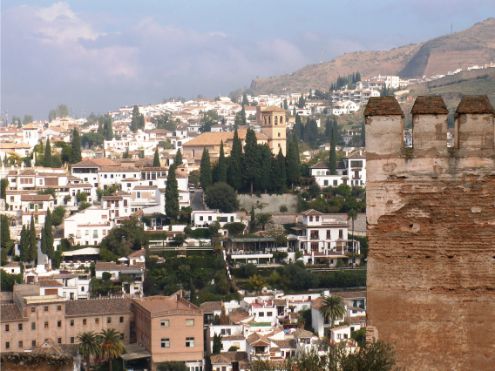
Image Credit: Pedro
Corpus Christi is Granada’s biggest annual fair, which was held for the first time by royal decree over 500 years ago. The celebration generally takes place in June, 60 days after Easter Monday; in 2019, from 15-23 June. It’s a cheerful festival with fancy dress, fairground attractions, and plenty of cultural activities both day and night; regional costume parades, flamenco, and elegant carriages. The Tarasca takes place on the Wednesday of each festival week, which is when a mannequin dressed in the next season’s fashion is paraded around the city, mounted on a fierce dragon. The fair ends on the following Saturday with a firework display.

Image Credit: José Sáez
Title Image Credit: Kate Nevens (Image Cropped)